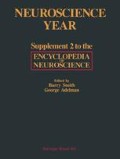Abstract
We do not yet know why larger bodied species of mammals, birds, and reptiles have larger brains. The evolutionary perspective on this problem is that species evolve to have brains that result in maximal reproductive success. This argument is based on two premises. First, there must be heritable variation in brain mass among the individuals of a species. Second, there must also be differential reproductive success among individuals according to differences in brain mass. Without controlled laboratory experiments, which are for the most part impractical, evolutionary biologists typically use cross species variation, which can be viewed as the outcome of a series of natural experiments: different species have evolved in response to environments in which different selective forces are preeminent. Relationships between variables such as brain mass, body mass, and ecological habits can help us to understand their functional significance, where function is interpreted in an evolutionary or adaptive sense.
Access this chapter
Tax calculation will be finalised at checkout
Purchases are for personal use only
Preview
Unable to display preview. Download preview PDF.
Further reading
Harvey PH (1988): The allometric approach to species differences in brain size. Hum Evol 3:461–471
Krebs JR, Sherry DF, Healy SD, Perry VH, Vaccarino AL (1989): Hippocampal specialization of food-storing birds. Proc Nat Aca Sci USA 86:1388–1392
Martin RD (1981): Relative brain size and basal mass rate in terrestrial vertebrates. Nature 293:57–60
Pagel MD, Harvey PH (1988): How mammals produce large-brained offspring. Evolution 42:948–957
Pagel MD, Harvey PH (1989): Taxonomic differences in the scaling of brain on body weight among mammals. Science 244:1589–1593
Burwell CS, Robin ED, Whaley RD, Bickelmann AG (1956): Extreme obesity associated with alveolar hypoventilation. A Pickwickian syndrome. Am J Med 21:811–818
Gastaut H, Tassinari CA, Duron B (1965): Etude poly-graphique des manifestations épisodiques (hypniques et respiratoires) du syndrome de Pickwick. Rev Neurol 112:568–579
Guilleminault C, Tilkian A, Dement WC (1976): The sleep apnea syndromes. Annu Rev Med 27:465–484
He J, Kryger MH, Zorick FJ, Conway W, Roth T (1988): Mortality and apnea index in obstructive sleep apnea. Experience in 385 male patients. Chest 94:9–14
Kryger MH, Roth T, Dement WC, eds. (1989): Principles and Practice of Sleep Medicine Philadelphia: WB Saunders
Evans R (1988): The steroid and thyroid hormone receptor superfamily. Science 240:889–895
McEwen B, Brinton R, Chao H, Coirini H, Gannon M, Gould E, O’Callaghan J, Spencer R, Sakai R, Woolley C (1990): The hippocampus: A site for modulatory interactions between steroid hormones, neurotransmitters and neuropeptides. In: Neuroendrocrine Perspectives, Muller E, MacLeod R, eds. pp 99–131. New York: Springer-Verlag
McEwen B, Coirini H, Danielsson A, Frankfurt M, Gould E, Mendelson S, Schumacher M, Segarra A, Woolley C (1991): Steroid and thyroid hormones modulate a changing brain. J Steroid Biochem (in press)
Simmonds M, ed. (1990): Steroids and Neuronal Activity, CIBA Foundation Symposium, London: John Wiley
De Camilli P, Harris SM, Huttner WB, Greengard P (1983): Synapsin I (Protein I), a nerve terminal-specific phosphopro-tein. J Cell Biol 96:1355–1373
Llinas R, McGuiness T, Leonard CS, Sugimori M, Greengard P (1985): Intraterminal injection of synapsin I or calcium/calmodulin-dependent protein kinase II alters neurotransmitter release at the squid giant synapse. Proc Natl Acad USA 82:3035–3039
Südhof TC, Czernik AJ, Kao H, Takei K, Johnston PA, Horiuchi A, Wagner M, Kanazir SD, Perin MS, De Camilli P, Greengard P (1989): Synapsins: mosaics of shared and individual domains in a family of synaptic vesicle phosphorproteins. Science 245:1474–1480
Südhof TC (1989): Synaptic vesicles. Current Opinion in Cell Biology 1:655–659
Editor information
Rights and permissions
Copyright information
© 1992 Springer Science+Business Media New York
About this chapter
Cite this chapter
Harvey, P.H., Pagel, M.D., Krieger, J., McEwen, B.S., Südhof, T.C. (1992). S. In: Smith, B., Adelman, G. (eds) Neuroscience Year. Supplement Encyclopedia of Neuroscience. Birkhäuser, Boston, MA. https://doi.org/10.1007/978-1-4899-6754-1_15
Download citation
DOI: https://doi.org/10.1007/978-1-4899-6754-1_15
Publisher Name: Birkhäuser, Boston, MA
Print ISBN: 978-1-4899-6756-5
Online ISBN: 978-1-4899-6754-1
eBook Packages: Springer Book Archive

